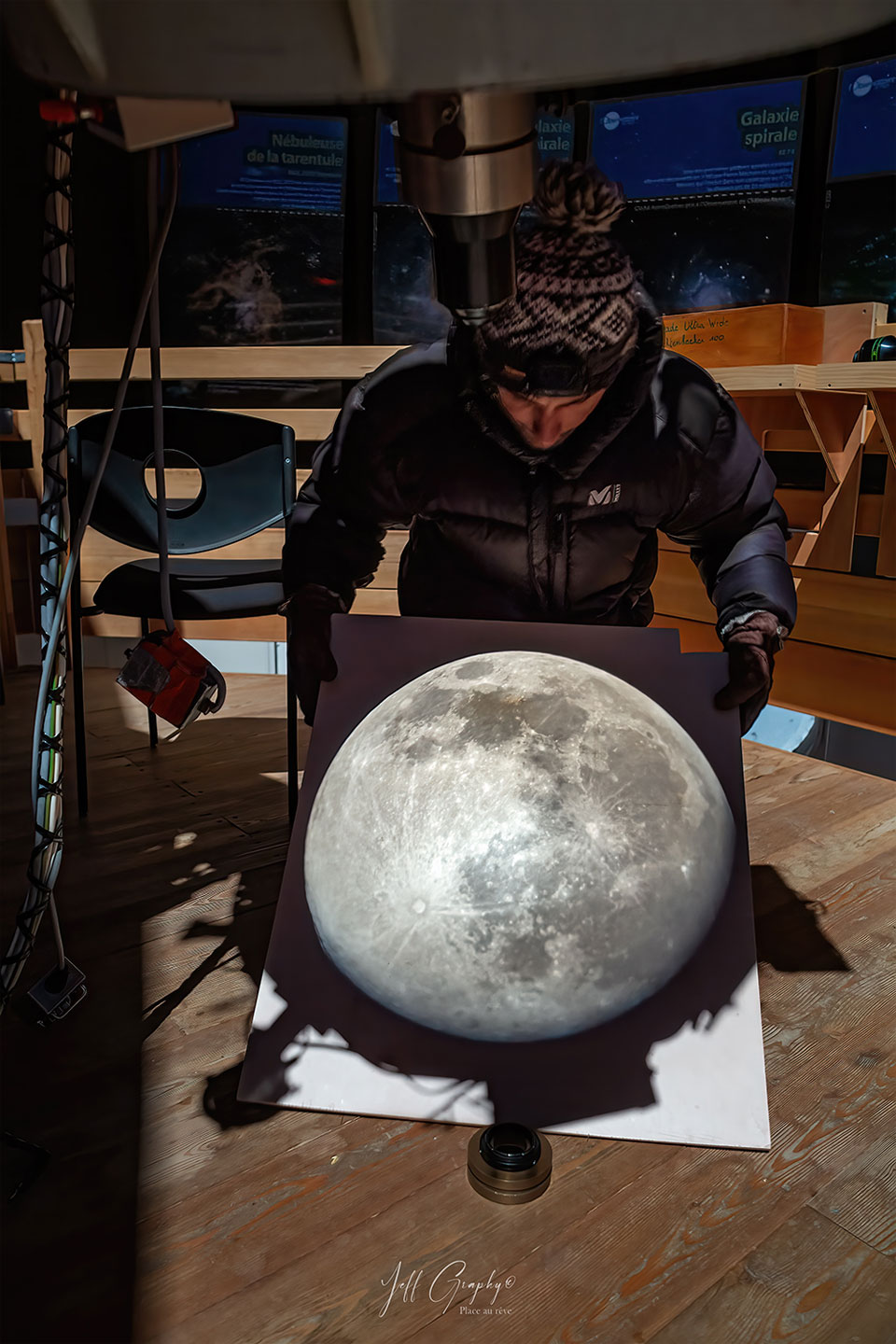
Posted on 02/28/2022 2:46:06 PM PST by MtnClimber
Explanation: You don't have to look through a telescope to know where it's pointing. Allowing the telescope to project its image onto a large surface can be useful because it dilutes the intense brightness of very bright sources. Such dilution is useful for looking at the Sun, for example during a solar eclipse. In the featured single-exposure image, though, it is a too-bright full moon that is projected. This February full moon occurred two weeks ago and is called the Snow Moon by some northern cultures. The projecting instrument is the main 62-centimeter telescope at the Saint-Véran Observatory high in the French Alps. Seeing a full moon directly is easier because it is not too bright, although you won't see this level of detail. Your next chance will occur on March 17.
For more detail go to the link and click on the image for a high definition image. You can then move the magnifying glass cursor then click to zoom in and click again to zoom out. When zoomed in you can scan by moving the side bars on the bottom and right side of the image.

Cool! That’s Tycho down there in the lower left. What an impact crater.
That’s nothing. I swallowed the Milky Way.
Should have taken a picture.
There’s a brown spot near the top center. I think he drooled on it.
The Chinese don’t already have a base generating pollution that would account for the brown spot do they?
bttt
I think that that is a deposit of iron rich regolith.
The lunatic is in the hall.......................
You lock the door and throw away the key
There's someone in my head but it's not me.
Disclaimer: Opinions posted on Free Republic are those of the individual posters and do not necessarily represent the opinion of Free Republic or its management. All materials posted herein are protected by copyright law and the exemption for fair use of copyrighted works.